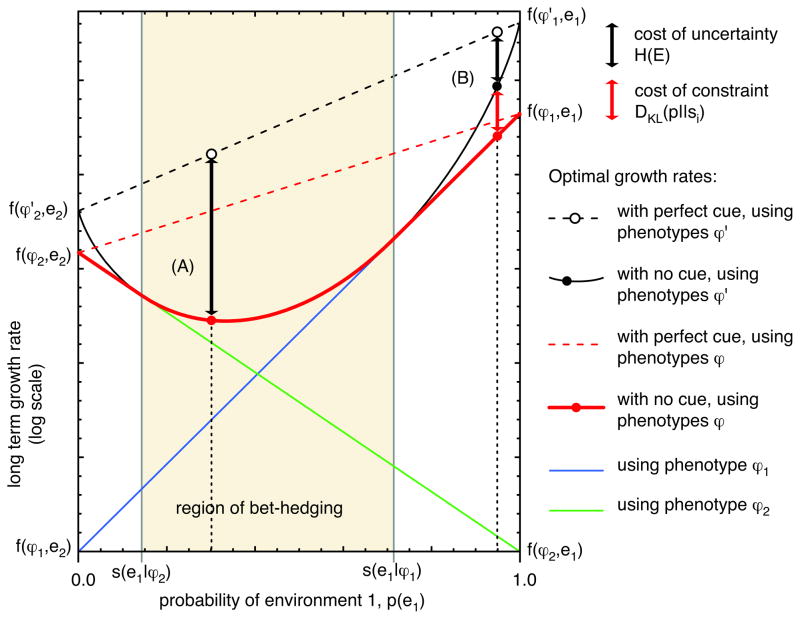Figure 2.
Maximal growth rate when choosing the wrong phenotype is not fatal. The red solid line indicates the maximal growth rate using the two phenotypes ϕ1 and ϕ2. The black solid line is the growth rate that could be achieved with an unconstrained strategy, using the hypothetical phenotypes and . Since the hypothetical phenotypes are fatal in the wrong environment, the optimal unconstrained strategy always uses proportional betting. In contrast, the optimal constrained strategy bet-hedges only in an intermediate range of environmental frequencies, labeled the “region of bet-hedging”. Outside that region, it uses the single phenotype that does best on average. (A) Within the region of bet-hedging, the constrained strategy does just as well as the unconstrained strategy. Compared to an unconstrained strategy that can perfectly predict the environment, both strategies incur a cost of uncertainty equal to the entropy of the environment H(E) (see Equations 8 and 15.) (B) Outside the region of bet-hedging, the constrained strategy does worse than the constrained strategy, since it cannot bet-hedge anymore. It always uses phenotype ϕ1 on the right of the region, where environment e1 is more common, and ϕ2 on the left. The growth rate achieved is therefore exactly as with the decision-theoretic strategy, optimizing fitness in just one generation. In this case, the constrained strategy pays not only the cost of uncertainty, H(E), but also a cost of constraint that arises from the inability to bet strongly enough on the most common environment. This constraint further reduces the growth rate by the Kullback-Leibler divergence DKL(p||si), which gets larger as we get farther from the boundary of the region of bet-hedging (see Equation 14.)

